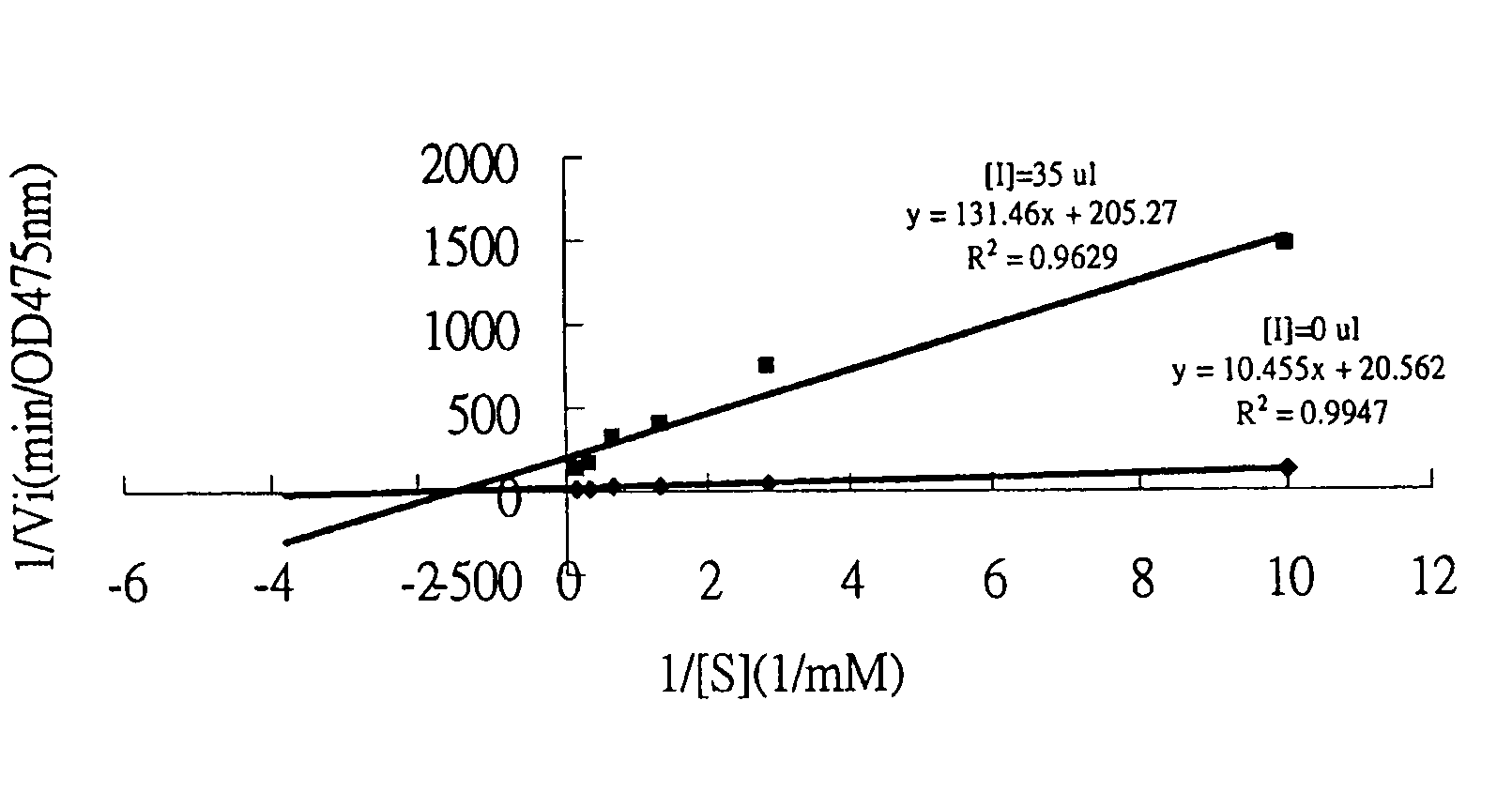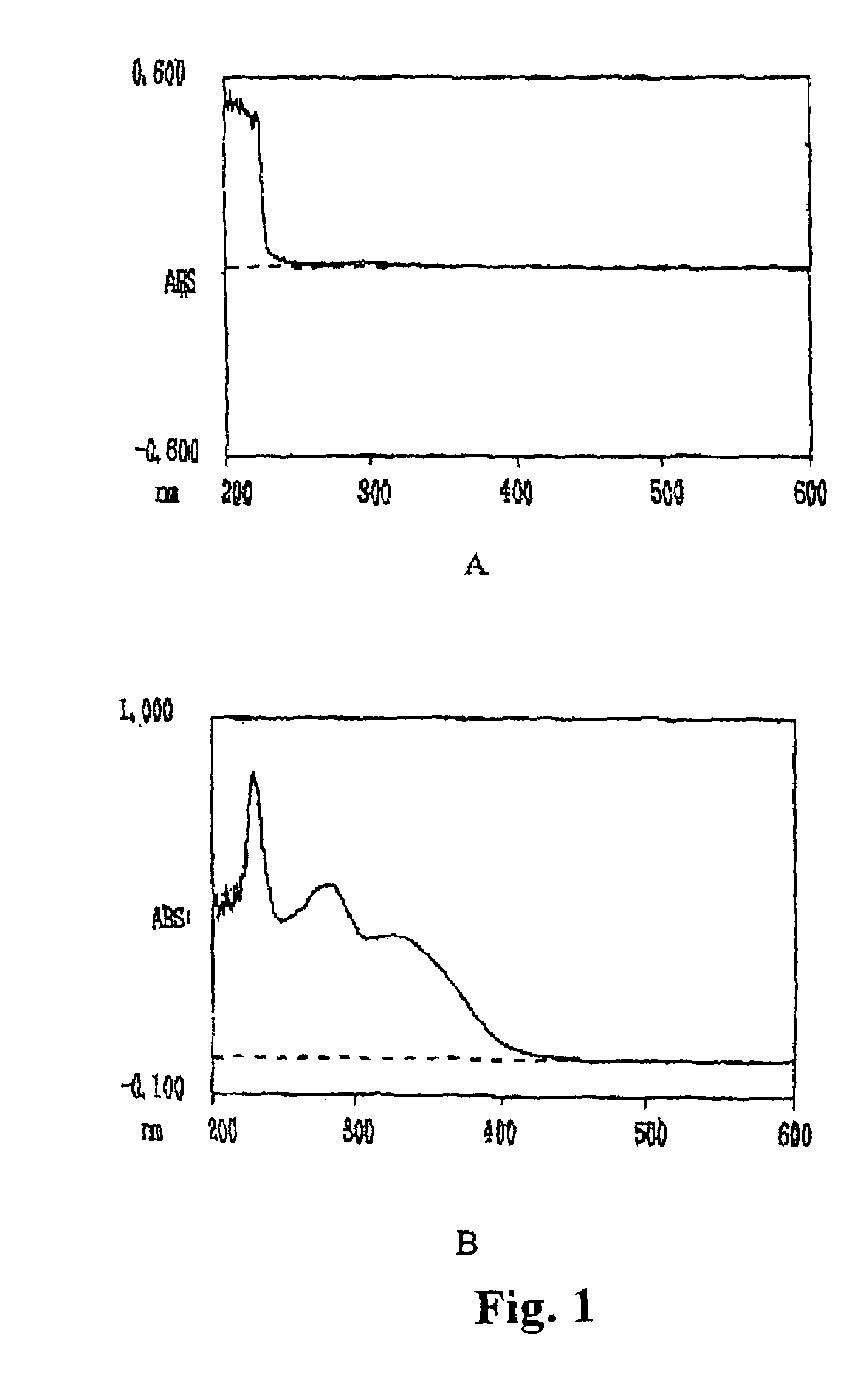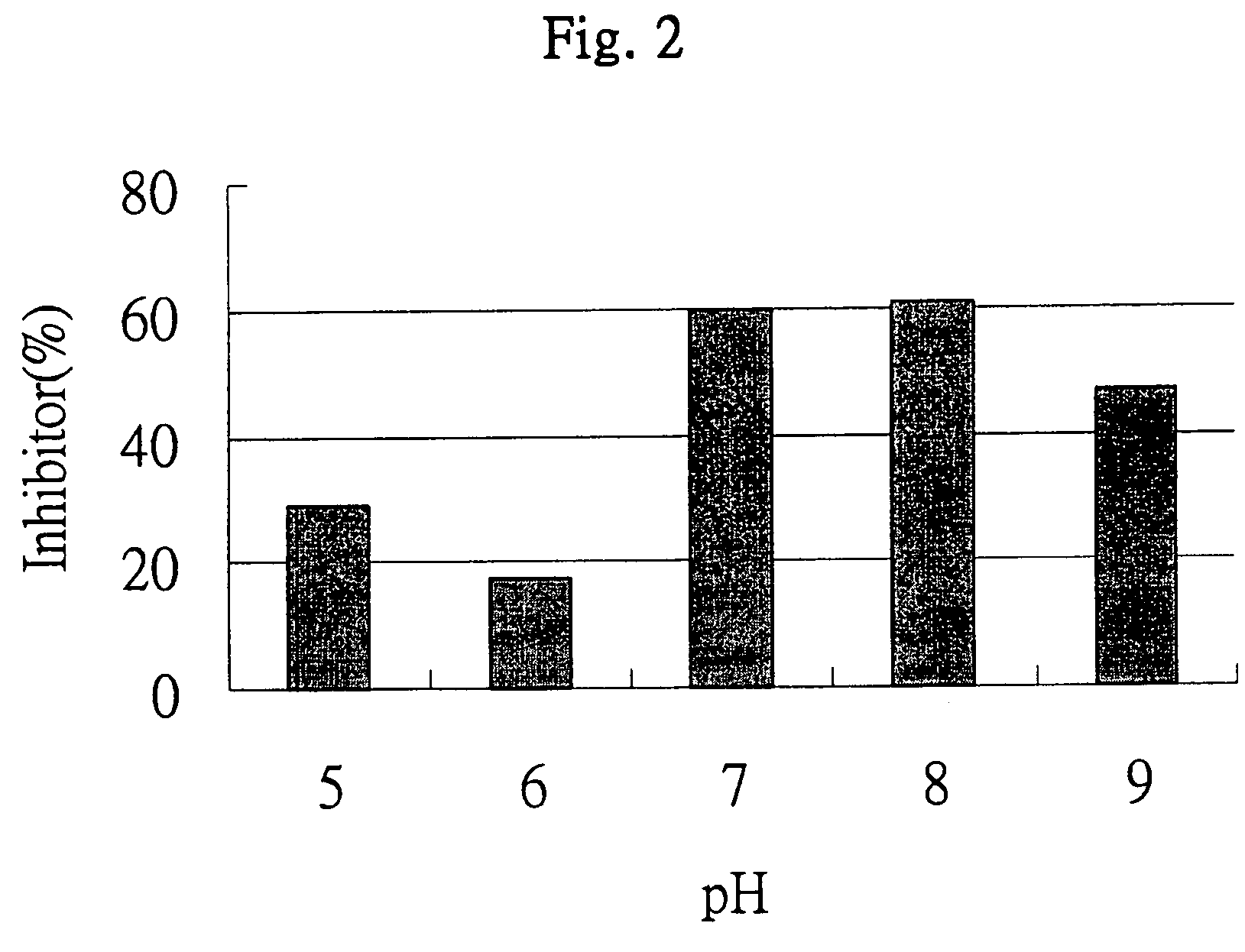Tyrosinase inhibitor extract
a technology of tyrosinase inhibitor and extract, which is applied in the direction of biocide, plant/algae/fungi/lichens ingredients, animal husbandry, etc., can solve the problems of ineffective whitening agent of ascorbic acid, unstable peroxide, and little effect of reducing pigmentation
- Summary
- Abstract
- Description
- Claims
- Application Information
AI Technical Summary
Benefits of technology
Problems solved by technology
Method used
Image
Examples
example
Example 1
Preparation of Tyrosine Inhibitor Extract
[0037]100 g of freshly minced lemon peels were mixed with 100–1000 ml of propylene glycol. The resultant solution was sonicated for a few seconds to break the cell walls of the lemon peels, and well mixed. The resultant extract was then sterilized and centrifuged. The supernatant was collected to obtain the tyrosinase inhibitor extract. The yield of 100 g of lemon peels extracted with propylene glycol is 70% to 90% of the volume of propylene glycol used.
example 2
Main Component of the Tyrosinase Inhibitor Extract
[0038]The absorbance at wavelengths 200 nm to 600 nm of the tyrosinase inhibitor extract of the invention and 80% propylene glycol were shown in FIG. 1A and FIG. 1B, respectively. As shown in FIG. 1, the tyrosinase inhibitor extract of the invention contains three main components. The absorbance at wavelength 280 nm indicates that one of the components is a protein or peptide.
example 3
Determination of Tyrosinase Inhibitory Effect
[0039]The activity of tyrosinase was determined at the wavelength of 475 nm and calculated from the decrease of the absorbance. The more whitening effect was shown, the higher percentage of inhibition there was.
[0040]35 μl of the tyrosinase inhibitor extract of Example 1 and 35 μl of 80% propylene glycol were used as the test and control samples. The inhibition percent of the tyrosinase activity was calculated by the equation: Inhibition percentage (%) of the tyrosine activity=[1−(Absorbance of experiment sample) / (Absorbance of control sample)]×100%. The DOPA and tyrosinase solution (1000 units / ml in 16.7 mM potassium phosphate butter) used in the following experiments were purchased from Sigma Corp., USA.
Inhibition Percentage of the Tyrosinase Inhibitor Extract on Tyrosinase under Different Reaction Time:
[0041]15.1 of tyrosinase solutions was added to each (35 μl) of six samples of tyrosinase inhibitor extract of Example 1. The resultant...
PUM
 Login to View More
Login to View More Abstract
Description
Claims
Application Information
 Login to View More
Login to View More - R&D
- Intellectual Property
- Life Sciences
- Materials
- Tech Scout
- Unparalleled Data Quality
- Higher Quality Content
- 60% Fewer Hallucinations
Browse by: Latest US Patents, China's latest patents, Technical Efficacy Thesaurus, Application Domain, Technology Topic, Popular Technical Reports.
© 2025 PatSnap. All rights reserved.Legal|Privacy policy|Modern Slavery Act Transparency Statement|Sitemap|About US| Contact US: help@patsnap.com



